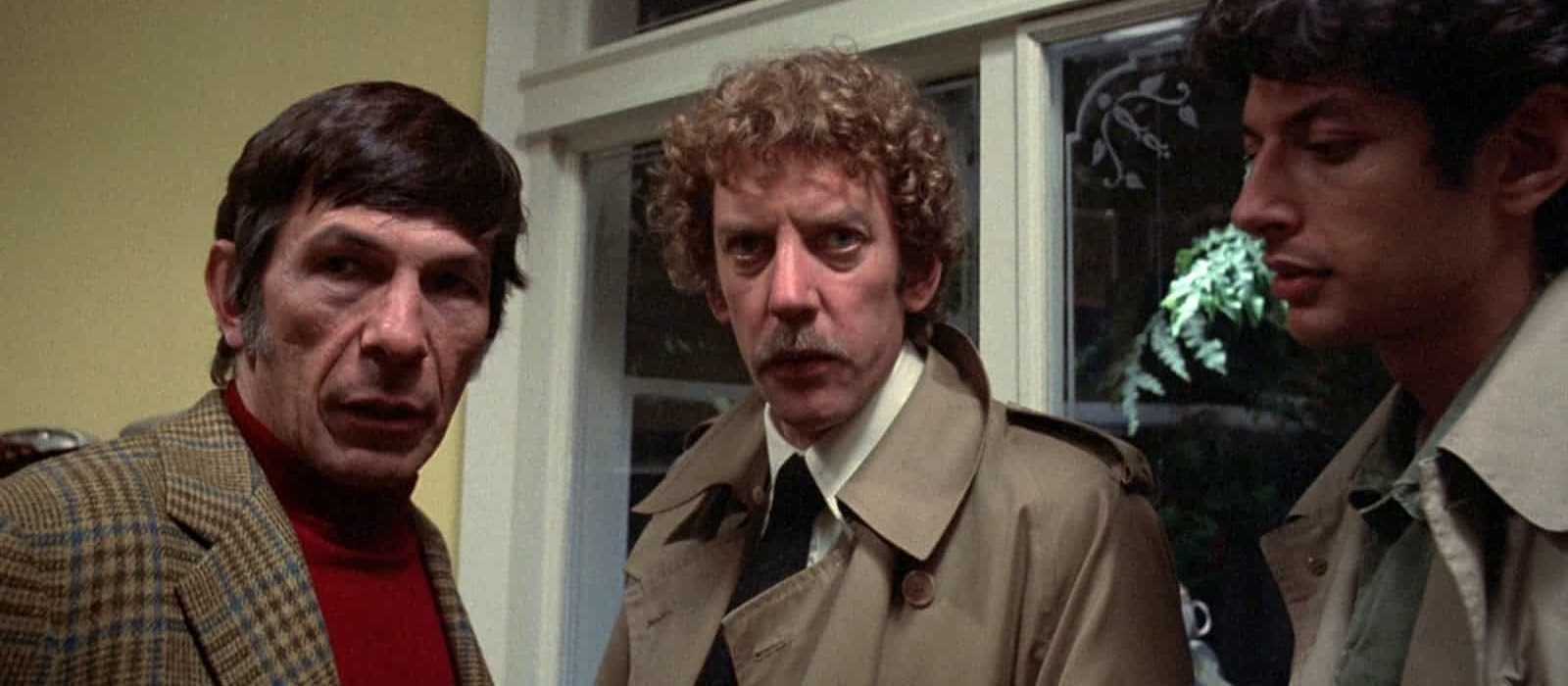
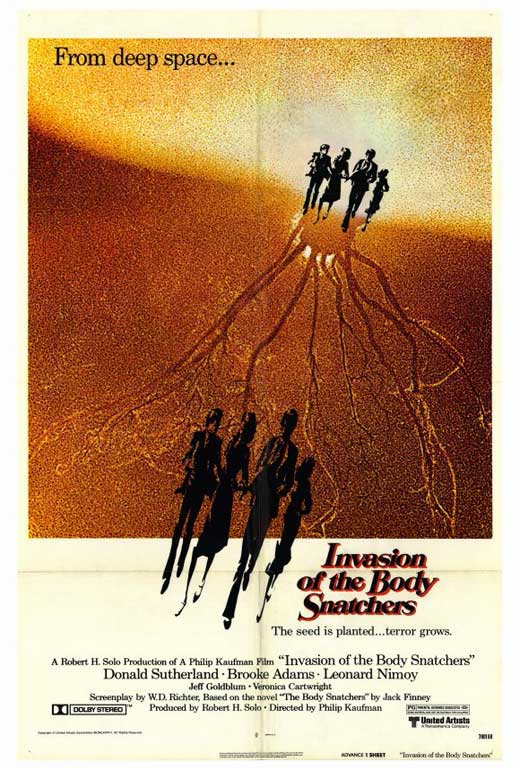
“We came here from a dying world. We drift through the universe, from planet to planet, pushed on by the solar winds. We adapt and we survive. The function of life is survival.”
An undersung element of Invasion of the Body Snatchers is how casually it presents itself—the relaxed buildup, scenes dedicated to character development, ruminative shots that linger on nothing in particular, the half-formed ideas about what exactly is happening to society outside of the bubble of our protagonists’ shared sense thought space.
While it eventually blossoms into a sublime paranoid fever dream, it spends the bulk of its runtime conveying a personal, unscientific investigation into a social irregularity, with all the trivial asides and hiccups that come along with it. This uncontrived approach jibes perfectly with the slow-building sense of terror, such that by the time the famous final frame creeps up on the audience, we’re like the proverbial frog in the pot of boiling water, only realizing that the dreadful horror has become all-encompassing once there’s no longer a chance of escaping it. It’s cliché to say that remakes are never as good as the originals, and that movies are seldom as good as the books that they’re based upon; but Invasion of the Body Snatchers is the rare exception to both of those rules.
Jack Finney’s The Body Snatchers and the original film are set in the 1950s, when Americans were paranoid about communism and the threat of nuclear war, when even people you knew and thought you trusted were suspect. Philip Kaufman’s version is updated to the post-Watergate 1970s, when American citizens no longer trusted their government and were paranoid in a more general sense (the remake is decidedly apolitical, though you can read into it whatever you’d like). The setting was changed from a small town where everybody knows each other to San Francisco, where social maneuvering requires some basic trust in the goodness of other human beings because a faceless mass of people roams the streets. Once the alien species begins its body snatching, and our characters grasp the essentials of the horrible invasion, we are graced with a very heightened sense of terror—anyone, even someone that you recognize and who can hold a normal conversation with you, could be one of them. But even if you can trust somebody unconditionally, how can you ever hope to outsmart this unified force of subordinate automatons? It’s a classic of the sci-fi horror genre, but further, it’s a classic of the nebulous subgenre of paranoid conspiracy thrillers that includes The Conversation, 3 Days of the Condor, Blow Out, and The Parallax View that were informed by their proximity to the political scandal as well as the spirited New Hollywood movement that allowed auteur filmmakers such a refreshing amount of creative freedom.
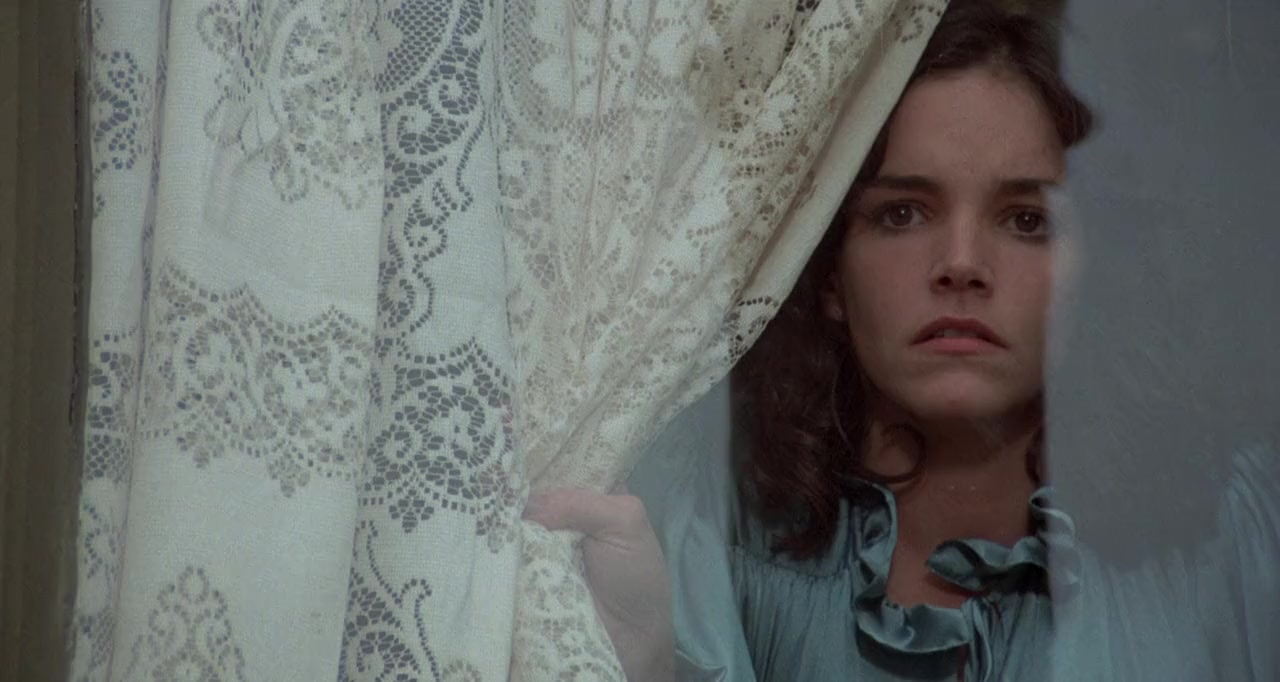
The film begins with some nice practical effects work clueing us in without overexplaining that an alien life form has infiltrated earth’s ecosystem by invading various forms of plant life and producing a new form of bud. This revelation is a bold choice so early in the film, especially compared with the original version which kept the alien nature of the body snatchers concealed until much further in. This sequence isn’t horrifying in a vacuum, but as a portent of what we know is coming it provides a satisfying ratcheting up of the tension.
It’s right there in the title, so we’re not surprised when Elizabeth’s (Brooke Adams) couch potato boyfriend Geoffrey (Art Hindle) starts acting strangely—waking up before his alarm clock, dressing up in a suit, and tidying up around the house. But we don’t know the details of what’s occurred, only that his altered demeanor gives Elizabeth the creeps. She brings her concerns to Matthew Bennel (Donald Sutherland), her colleague at the Health Department, who doesn’t really take her seriously but perceives the situation as an opportunity to make a romantic move. When she enters his apartment in a confused state, a long take captures a wonderfully scripted conversation where Elizabeth tries to describe the change in Geoffrey and Matthew gently flirts with her while slicing veggies for his ginormous wok, drinking wine, and listening to jazz music. It’s a sequence that takes confident planning and a talented cast but does not call attention to itself and can be easily missed, but reveals true craftsmanship. Subtle in form but also narrative content, it flies in the face of contemporary and modern pop horror which would not give time for discussions with the level of nuance and implication seen here.
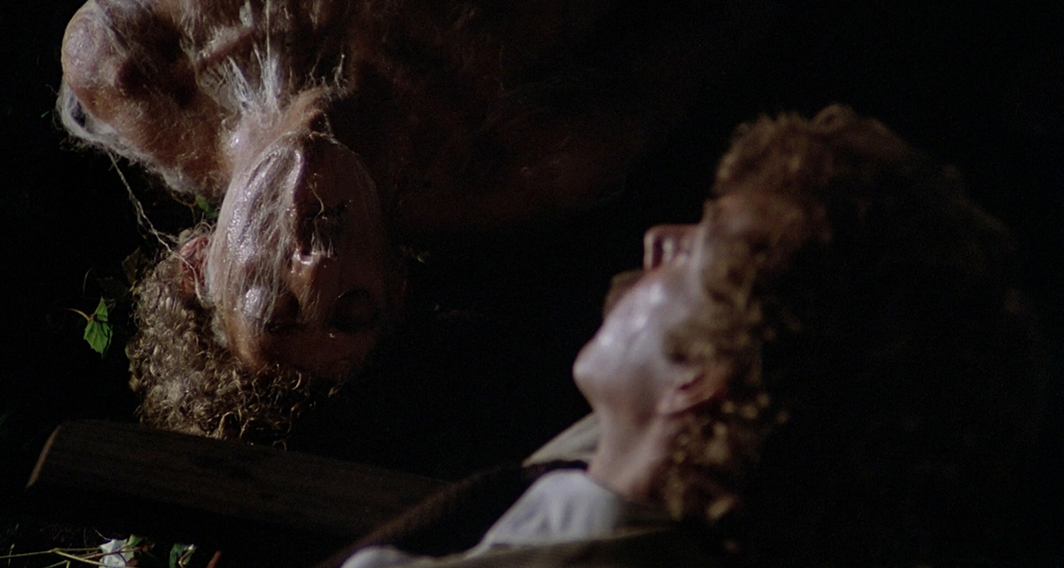
Once Matthew convinces Elizabeth to have dinner with him, he recommends that they talk to his friend Dr. Kibner (Leonard Nimoy), a popular psychiatrist who is hosting a book-signing party for his latest volume of self-help material. When presented with her case, Kibner admits he’s received similar complaints in recent days, but dismisses her condition as self-generated—he thinks she perceives Geoffrey’s behavior as odd because she subconsciously wants to end their relationship. But more evidence is soon presented to us when Jack (Jeff Goldblum) calls Matthew about a dead body found in his wife’s mud spa, grotesque in form and covered in strange fibers. This scene is the first truly unsettling bit of nightmare fuel, as the closer Jack comes to drifting off to sleep, the more the unformed, fibrous body takes on his form. Though it had no pulse upon discovery, it eventually blinks at Nancy (Veronica Cartwright). It’s this encounter that finally convinces Matthew that something is seriously amiss, and he rescues Elizabeth from this sleep-duplication fate by the skin of his teeth.
Don Siegel’s original keeps up a relentless pace, but Kaufman chooses to give his film a lot of breathing room. We’re fed these meditative interstitial moments where we feel like we can relax a little bit, but when we do, we begin to ponder the loose threads and run into some horrible existential questions. Kaufman’s style also boasts a pleasing lack of polish, a sort of renegade aesthetic characterized by bold camera placement and movement, and idiosyncratic narrative choices, that result in a discombobulating experience—which is the desired effect. For instance, in the film’s opening scene, decorated actor Robert Duvall is seen swinging on a playground set with some children. He’s dressed as a priest, and the frame briefly shifts to his point of view. It’s full of menace but ends up being a mere cameo; but we don’t know that. Don Siegel also cameos as a cab driver. There is a noticeable dearth of explanatory dialogue, leaving us to piece together much of the story ourselves through the uncertain conversations between characters. Even the exact mechanics of the body snatching are kind of left in the background, with the recurring presence of garbage trucks being filled with dusty, unidentifiable husks being our only solid clue. Another unsettling scene occurs later in the film, after our protagonists have realized that nearly every person in the city has become a “pod person.” Nancy has discovered that by walking in rhythm with the others they can move about undetected. Throughout the film, as the characters had moved about the city, they’d crossed paths with a busker several times as he sat and plucked away at his banjo with his loyal dog wagging his tail beside him.1 After several moments of successfully going unnoticed, Elizabeth screams in fright when the banjo player’s dog approaches them, the busker’s face superimposed onto the dog’s. It should be noted that all of the film’s effects were achieved through practical means.
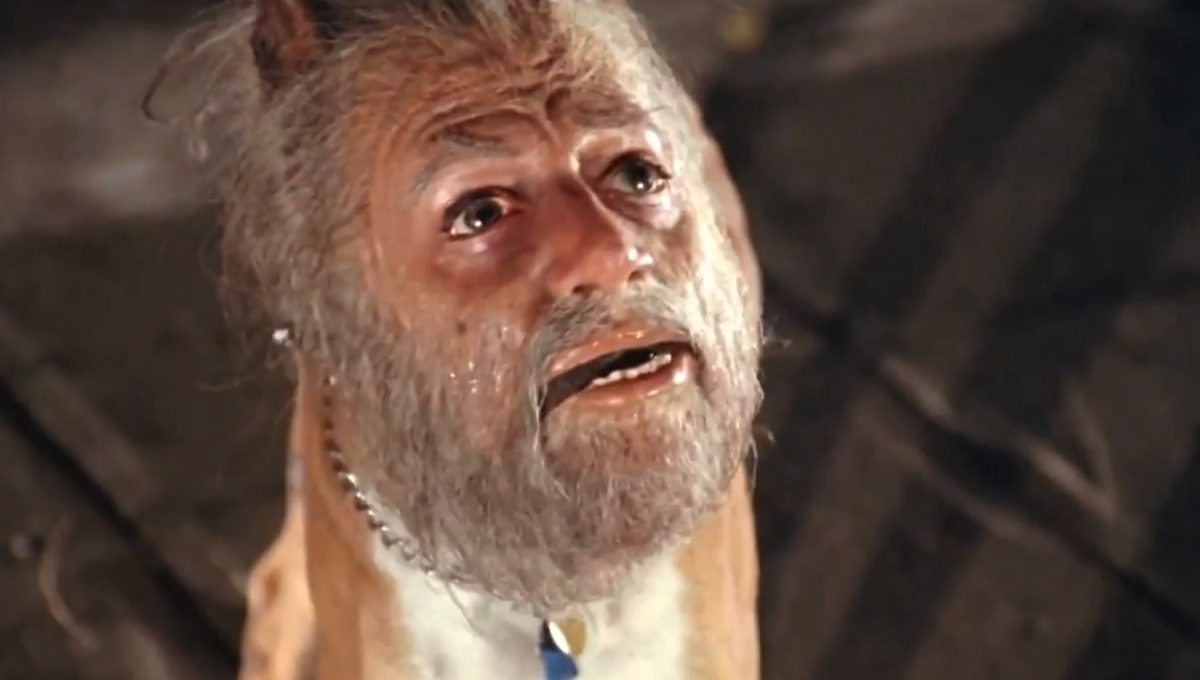
Kaufman’s artistry is even deeper than that. For instance, take the scene at the book-signing party, when Matthew is still uncertain if he believes Elizabeth. As soon as Matthew enters and greets Jack, he asks to use the phone to report a car accident in which a pedestrian, who had caught onto things before anyone else in the film, was running around warning people of what was coming before being plowed by a speeding car. (The pedestrian is played by Kevin McCarthy, who starred in the 1956 version.) As Matthew tries to report the accident to the police, Jack, a frustrated, underread poet, lets off some steam about Kibner’s undeserved popularity and lack of integrity, talking over Matthew as both stand in front of a funhouse mirror. It’s a surreal moment, as their voices duel above the din of chatter in the bookstore. Goldblum’s rapidfire, scatterbrained dialogue predicts a similar approach in films like The Fly and The Big Chill.
In the film’s climax, Matthew and Elizabeth are on the run, barely keeping ahead of their capture and inevitable transformation. They huddle together on a shipping dock, hoping to escape on a seafaring vessel. But this flicker of possibility is snuffed out when Matthew approaches to get a better look at the ship and finds that it is being loaded with pods. When he returns to Elizabeth, he finds her fast asleep; though he tries to wake her, it is too late. Her duplicate has already formed and come alive, and the disintegration of her former body is marked by another incredible use of practical effects that leaves a lasting, haunting image. Matthew’s escape is not shown, and so when we see him blending in back at the Health Department, we are not sure what to tell ourselves, though our question is answered soon enough when Nancy, who has survived the ordeal intact, approaches her former friend, overjoyed that he is okay. And then he lets out that horrible alien shriek that alerts his fellow pod people that he’s located a human, a surprise twist that many of the cast and studio heads did not know about until they needed to—such a jarring, devastating ending.
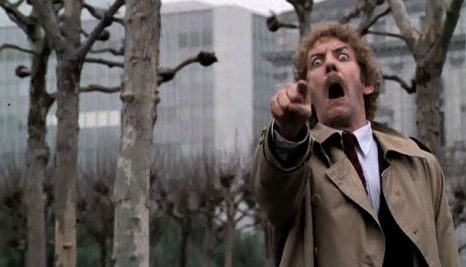
It’s hard to corral everything that makes this movie special into a summary review. I don’t know if I’ve quite made the case for its vitality, creativity, fluidity, and unsettling tone. I have scarcely mentioned the sound design by Ben Burtt, without which the film would not be nearly as dreadful and menacing. But it’s also funny and endearing and imbued with humanity. I’m a sucker for films of this fertile era as well as the genre, so maybe I’m biased, but Invasion of the Body Snatchers transcends sci-fi, horror, and New Hollywood and is simply great cinema.
1. The banjo playing was supplied by none other than Jerry Garcia, though he is not the actor in the film.
Sources:
Weiner, David. “Why ‘Invasion of the Body Snatchers’ Still Haunts Its Director”. Hollywood Reporter. 20 December 2018.